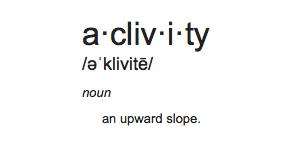No matter how much work experience you have, there will be times when you do not know the best way to manage an aspect of business communication, or you come up short in your role – and someone will criticize you for it. It can challenge to handle criticism, especially if you take criticism as if it is a comment on your intrinsic worth or ability to perform your job. However, if you learn to take criticism as an opportunity to improve your performance and refocus your strategies, it is less painful – and more productive. In our experience as corporate leaders, we have given out – and received – our fair share of critical feedback. We would like to share a few bits of hard-earned wisdom about handing criticism at work. Hopefully, they’ll help you take the sting out of negative comments and encourage you to be conscious of how your reaction to criticism can help, or hurt, your ability to bounce back.
Know that criticism is nothing special
When you receive negative feedback, it can sometimes make you feel like everyone around you is either infallible (or inept) – and you are the only one who being singled out. Try to take a step back when you are hit with words you did not want to hear. Remember that, throughout history, the best way to improve is to know what you could do better – and then, of course, to actually do it better.
Try to hear through the words used to criticize
The person who is criticizing you has no doubt received their own dose of criticism. Ideally, a manager’s experience with negative feedback will result in a management style that airs grievances with clear and non-aggressive communication. No matter how aggressively the criticism comes at you, try to hear through to the kernel of truth in what has been said. The conversation is about identifying areas that could use improvement. To provide a remedy, you need to be clear on exactly what you are being asked for. If you get upset, allow yourself to be steamrolled or bite your tongue, you might end the interaction without really understanding what you did (or didn’t do). If you can hear the message being conveyed, and clarify when management’s points are unclear, you can more quickly move from “what’s wrong” to “what’s next.”
Find your words and buy yourself some time to process
Your immediate response to criticism will govern your manager’s impression of your character. When you don’t know what to say, it’s best to keep it simple. A statement like, “I hear you saying… and that you want me to…because I did/didn’t…” will show that you have listened to and understand the concerns being raised. From there you can buy yourself some time to process the situation by saying something like, “I’d like to take a little time to consider how I’ll remedy this issue. Can we talk more about this…(specify a time)?” Reacting poorly in the moment of confrontation can lead to unintended negative consequences. Give yourself a breather to process what’s been said, how you feel about your behavior and what the best course of action is while remaining professional. How will you take this lesson in stride, and demonstrate to management willingness to grow?
Acknowledge what’s true
If you have really heard the criticism leveled – and have taken time to process before responding in detail – you’ll be able to see what is actually true. Did you fail in your duties? Could you have done something differently (even if only considering it in hindsight)? Be honest about what you have, or have not, done and take ownership of your mistakes. Consider it this way: When you feel wronged, and the person who made the mistake verbalizes what they have done and takes ownership of their behavior or choices, do you feel better about the situation? More forgiving? Well, it is the same in business – you do not need long talks, tears or flowers to own up to what’s true – or to refute what’s not true. You just need honest, straightforward communication that makes it clear that you value and understand the expectations of the business relationship – and that you will endeavor to do better.
Agree on what’s next
Depending on the situation, it might be appropriate to outline improvements or changes to processes that arise from the criticism. Do you need training? What does that look like? Do you need support? What specific actions do you need to take to put that criticism to rest? If you are outlining a change in your workflow, skills or processes, run it by the manager who voiced the criticism. Make sure that the actions you intend to take actually solve the problem – and hold both sides accountable for agreements made.
When you see criticism as a tool you can use for your own improvement, you save yourself the pain of self-judgment and you demonstrate your ability to respond effectively to requests your managers make. In the end, how you respond to criticism – and the steps you take to remedy your actions – will show your employer that you are serious about effectively handling your responsibilities. Most importantly, learning how to handle criticism helps you feel better about the fact that you’re not perfect. Not yet.














